Welcome to a world where harmony meets style in your living space! Whether you’re just dipping your toes into the waters of home decorating or have been riding the waves of interior design for years, “13 Refreshing Feng Shui Tips for Home Interiors” is your ticket to a space that not only looks beautiful but also feels amazing. Feng Shui, the ancient Chinese art of placement, offers a wealth of wisdom that promises to transform your home into a sanctuary of balance and positivity.
By embracing these thoughtfully curated tips, you’ll discover the practical magic of arranging your home to maximize energy flow and foster well-being. This guide is packed with ideas that are both easy to implement and immensely rewarding, helping you unlock the full potential of your living environment. Imagine the joy of walking into a room that immediately uplifts your mood and invigorates your spirit—these techniques are here to help you achieve exactly that. Embark on this journey with confidence, knowing that each tip is designed to empower you to create a space that is not only visually appealing but also profoundly nurturing.
Declutter to Enhance Energy Flow
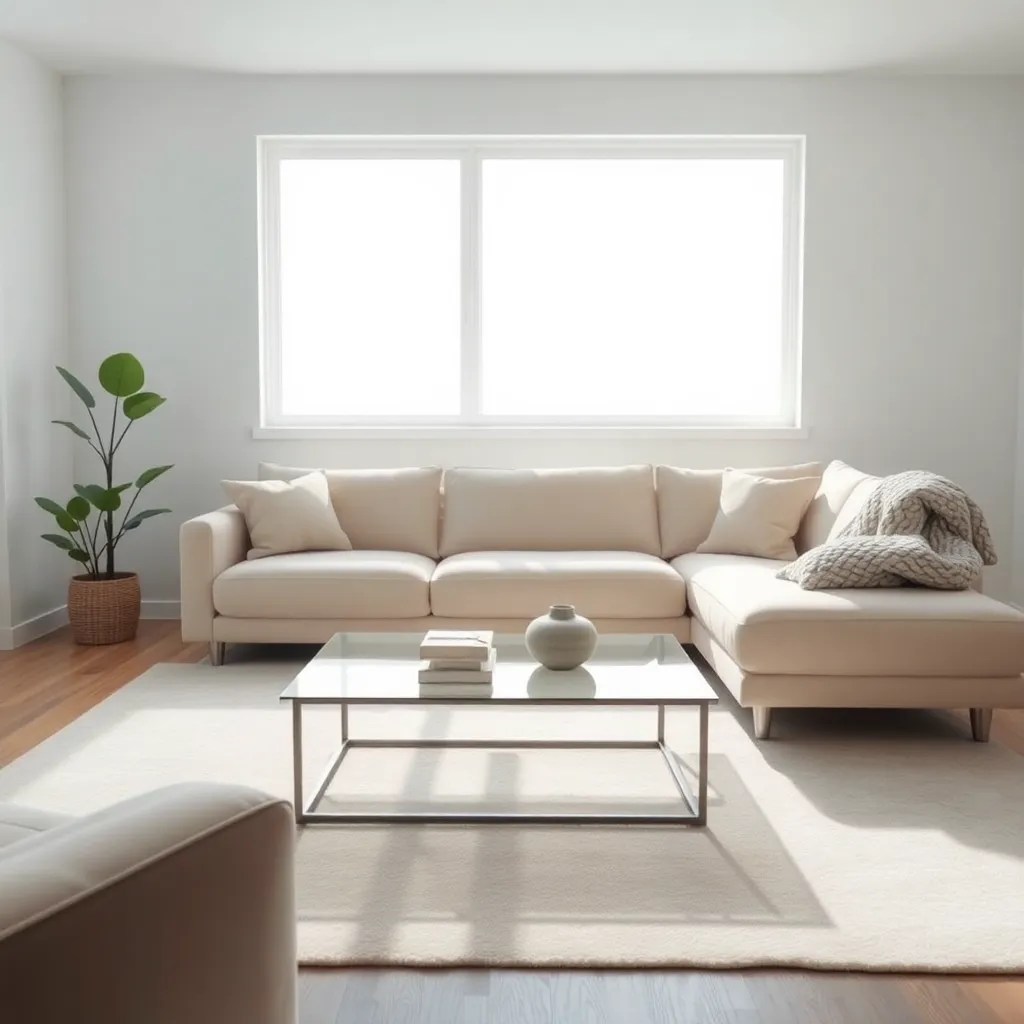
Embracing the philosophy of decluttering can significantly enhance the flow of energy, or “chi,” in your home. Begin by assessing each room and identifying items that no longer serve a purpose, as these can create stagnant energy.
To start, focus on one room at a time and remove items that are broken or unused. This simple act of clearing out clutter can immediately make a room feel more spacious and inviting.
Consider investing in storage solutions that are both functional and stylish, like woven baskets or sleek shelving units. For a more advanced approach, opt for furniture pieces with built-in storage, such as ottomans or beds with drawers, to maximize space and maintain a clean look.
Choose a color scheme that promotes tranquility and clarity, such as soft whites, light grays, or gentle blues, to enhance the calming effect of a decluttered space. Use these colors on walls or large furniture pieces to create a serene backdrop, then add pops of color through accessories like cushions or artwork.
Position Furniture for Harmony
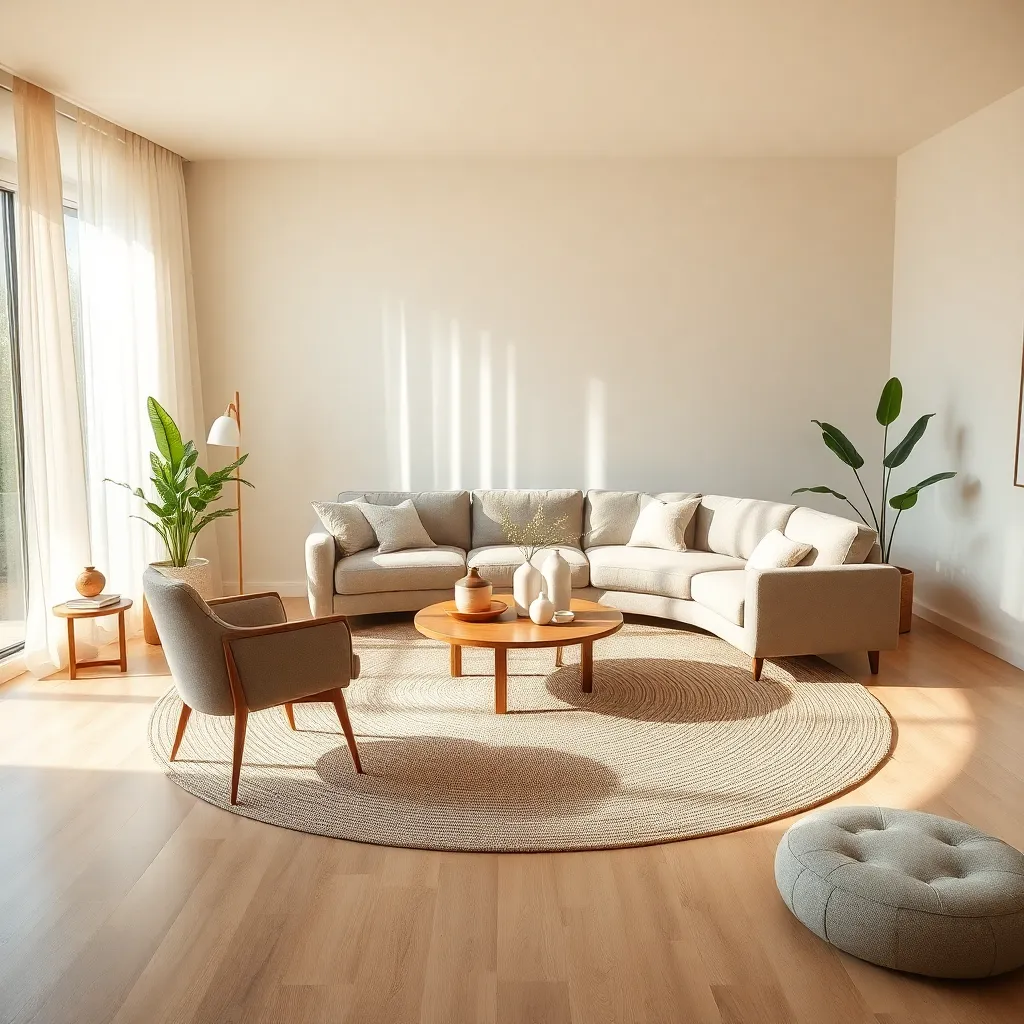
Achieving harmony in your home through furniture placement is a key principle of Feng Shui. Begin by considering the function of the room and arrange furniture to facilitate both movement and interaction, ensuring that pathways remain clear for an unobstructed energy flow.
Position seating arrangements to create inviting spaces that encourage conversation and connection. For example, place sofas and chairs facing each other rather than aligned in a row, as this fosters a sense of intimacy and balance.
In areas like the living room or family room, ensure that your furniture does not block windows or doorways. Natural light should be allowed to flow freely, enhancing the room’s energy and creating a more open, airy atmosphere.
Consider the materials and colors of your furniture when arranging your space. Opt for wooden pieces and earth tones to ground the room, while incorporating a few metallic or glass elements can add a touch of modernity and balance.
Incorporate Natural Elements Indoors
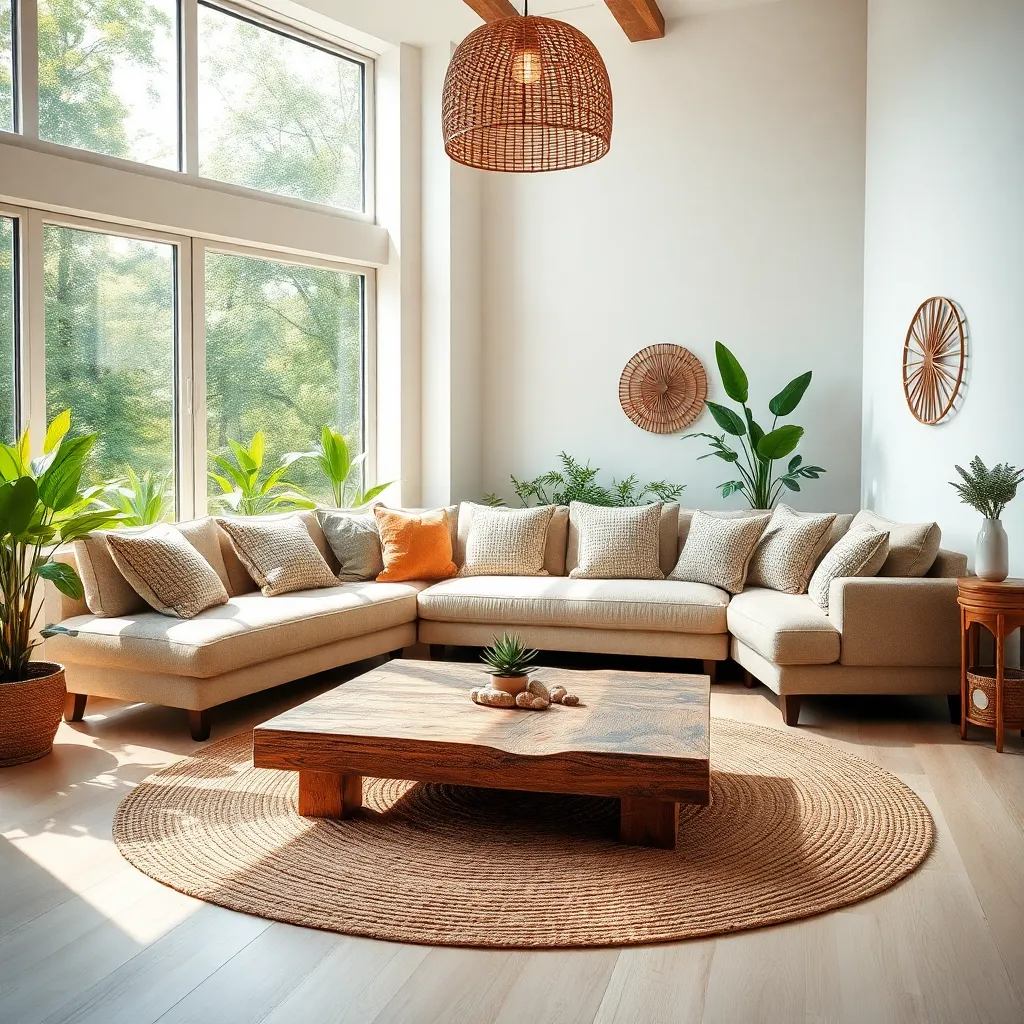
Bringing natural elements indoors is a fundamental aspect of Feng Shui, enhancing both the aesthetic and the energy of your space. To start, integrate live plants such as the humble snake plant or the elegant peace lily, which are both low-maintenance and air-purifying, bringing life and vibrancy into your home.
Incorporate materials that reflect the earth’s calming presence, like wood and stone, to create a grounded and tranquil environment. Consider a reclaimed wood coffee table or a stone accent wall, both of which add natural textures and a sense of permanence to your living space.
Water features can also bring a refreshing touch to your interiors, symbolizing abundance and flow in Feng Shui. Opt for a small indoor fountain or an aquarium; position these in the north of your home to enhance career opportunities and personal growth.
To elevate the natural theme, use a color palette inspired by nature, such as soft greens, earthy browns, and sky blues. These colors can be incorporated through accessories like throw pillows or artwork, providing a cohesive and calming backdrop that complements any decor style.
Use Color to Balance Chi
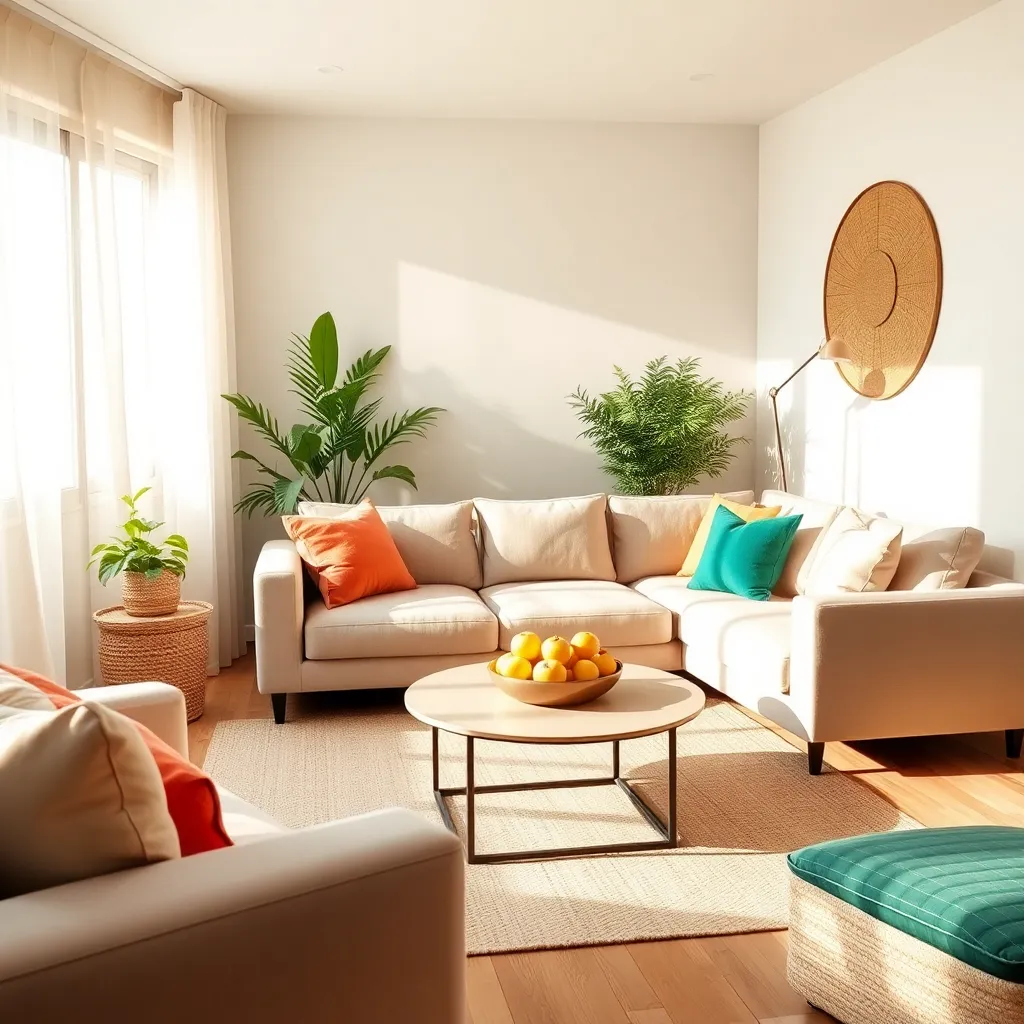
To effectively balance chi in your home, the strategic use of color is crucial. Begin by selecting a color scheme that aligns with the energy you want to cultivate in each room, such as calming blues for relaxation or vibrant yellows for social spaces.
Consider the five elements of Feng Shui—wood, fire, earth, metal, and water—when choosing colors. For example, incorporate shades of green and brown to represent wood, fostering growth and vitality, while reds and oranges can enhance the fire element to encourage passion and energy.
Use color placement to guide the flow of energy through your space. Position warm hues like red or orange near entryways to invite warmth and welcoming energy, while cooler tones like blues and greens should be placed in areas meant for relaxation, such as bedrooms or living rooms.
For a more advanced approach, experiment with color contrasts to create dynamic energy shifts. Pairing complementary colors, such as blue and orange or purple and yellow, can balance yin and yang energies, promoting harmony and equilibrium in your home.
Place Plants for Vibrancy
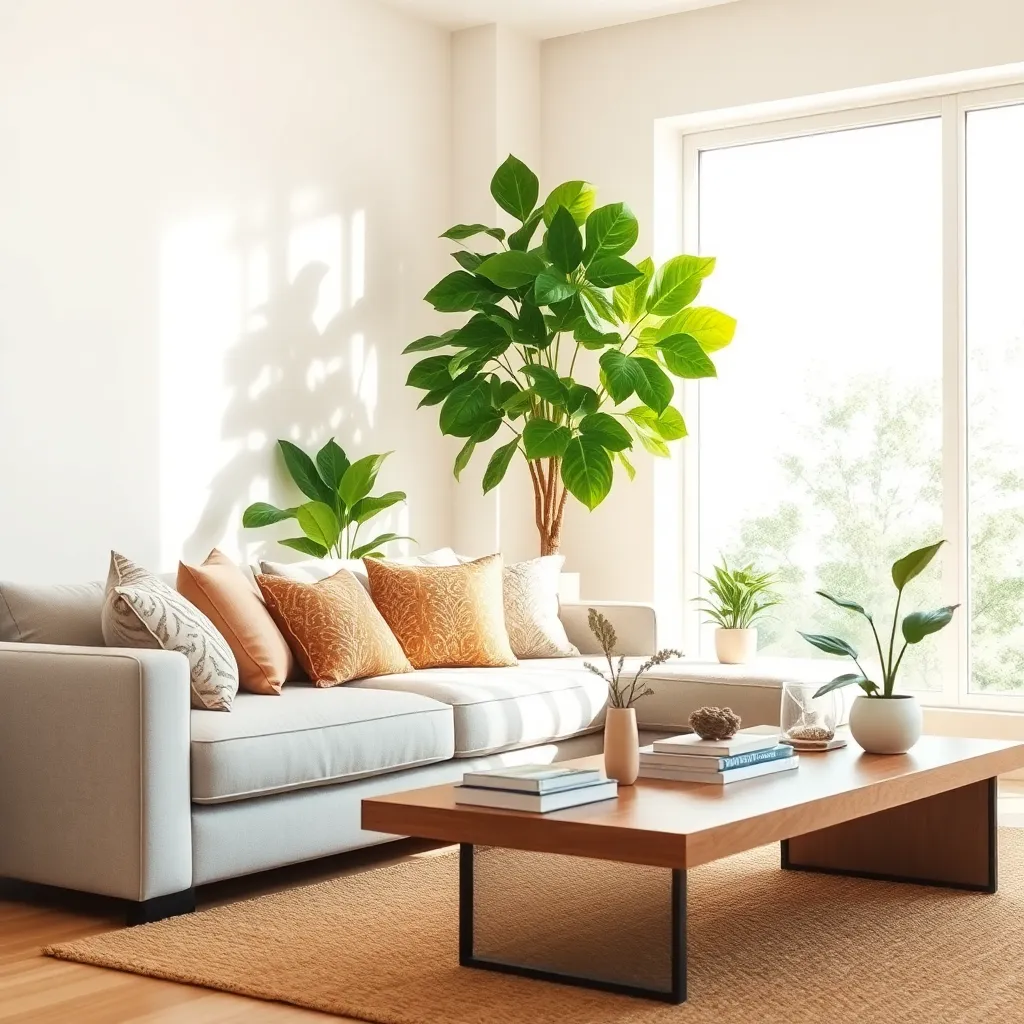
Incorporating plants into your home decor is a powerful way to add vibrancy and balance to any space. Begin by selecting low-maintenance plants, such as succulents or ferns, which can thrive in various lighting conditions and require minimal care.
Strategically placing plants can enhance the flow of energy, also known as chi, within your home. Position larger plants like fiddle leaf figs in corners or near entryways to create a welcoming atmosphere and establish a natural focal point.
For a pop of color, consider using flowering plants like orchids or bromeliads. These can be placed on side tables or shelves to draw the eye and add an element of surprise to your decor.
Advanced decorators might experiment with plant groupings to create a lush, layered look. Use different heights and textures by combining tall plants with trailing varieties, like pothos or ivy, for a dynamic visual effect.
- Choose plants that complement your room’s color palette to maintain harmony.
- Ensure proper sunlight and watering needs are met to keep plants healthy and vibrant.
- Experiment with different planters to add a personalized touch to your plant display.
Optimize Lighting for Positivity
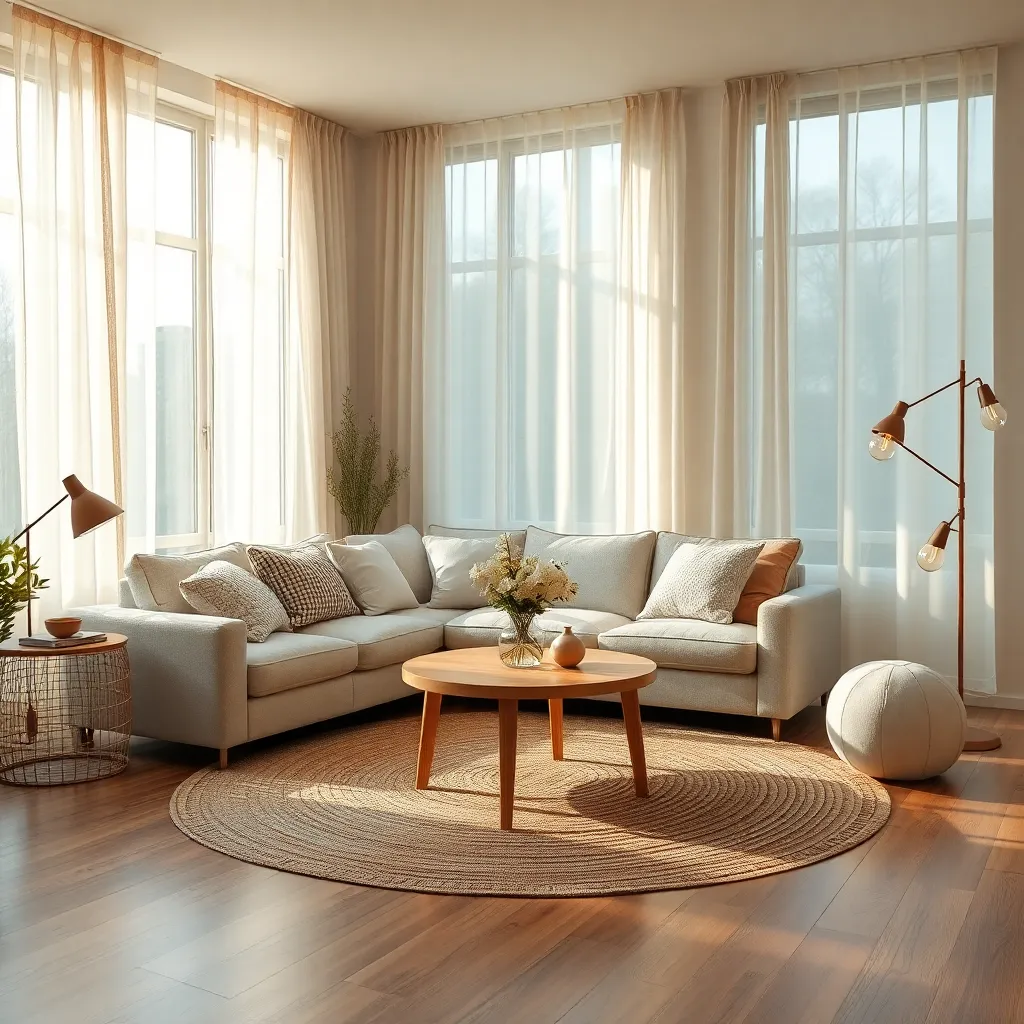
Lighting plays a crucial role in creating a positive atmosphere in your home. To enhance positivity, consider employing a combination of natural and artificial lighting. Maximize natural light by using sheer curtains that allow sunlight to filter through while maintaining privacy. Arrange mirrors strategically to reflect light around the room, amplifying the brightness and creating the illusion of a larger space.
Incorporating layered lighting can significantly affect the mood of a room. Use a mix of ambient, task, and accent lighting to provide flexibility and depth. Ambient lighting, such as ceiling fixtures or pendant lights, offers overall illumination, while task lighting, like desk or floor lamps, supports specific activities. Accent lighting, like wall sconces or under-cabinet lights, highlights architectural features or art pieces, adding a personalized touch.
Choosing the right light bulb color temperature is essential for setting the desired mood. Warm white bulbs (2700K-3000K) create a cozy, inviting atmosphere perfect for living rooms and bedrooms. For areas requiring focus, like kitchens and offices, opt for cool white bulbs (3500K-4100K) to enhance concentration and energy. Consider using dimmer switches to adjust the lighting intensity according to your needs, offering both functionality and control.
Innovative smart lighting solutions can further enhance positivity and convenience in your home. Install smart bulbs that allow you to change colors and brightness levels with a smartphone app or voice command. This flexibility lets you easily adapt your lighting to different occasions or moods, making your space versatile and responsive. For a touch of luxury, invest in programmable lighting systems that simulate natural light patterns to align with your body’s circadian rhythm, promoting overall well-being.
Introduce Water Features Carefully

Integrating water features into your home can enhance tranquility, but it requires careful placement. To ensure positive energy flow, position water elements like fountains or small indoor waterfalls in the east or southeast areas of your home, which correspond to health and wealth in Feng Shui.
Choose materials that harmonize with your existing decor to maintain a cohesive aesthetic. For a modern touch, consider a sleek, stainless steel fountain, while a stone or ceramic option may suit more traditional interiors.
Pay attention to the scale of the water feature relative to your space. A large fountain in a small room can overwhelm the area, whereas a modest tabletop fountain might be the perfect addition to a cozy reading nook.
Advanced decorators might explore integrating a water feature with natural elements like plants or stones. This combination can enhance the sense of serenity and balance, further promoting a harmonious environment.
Arrange Art Mindfully
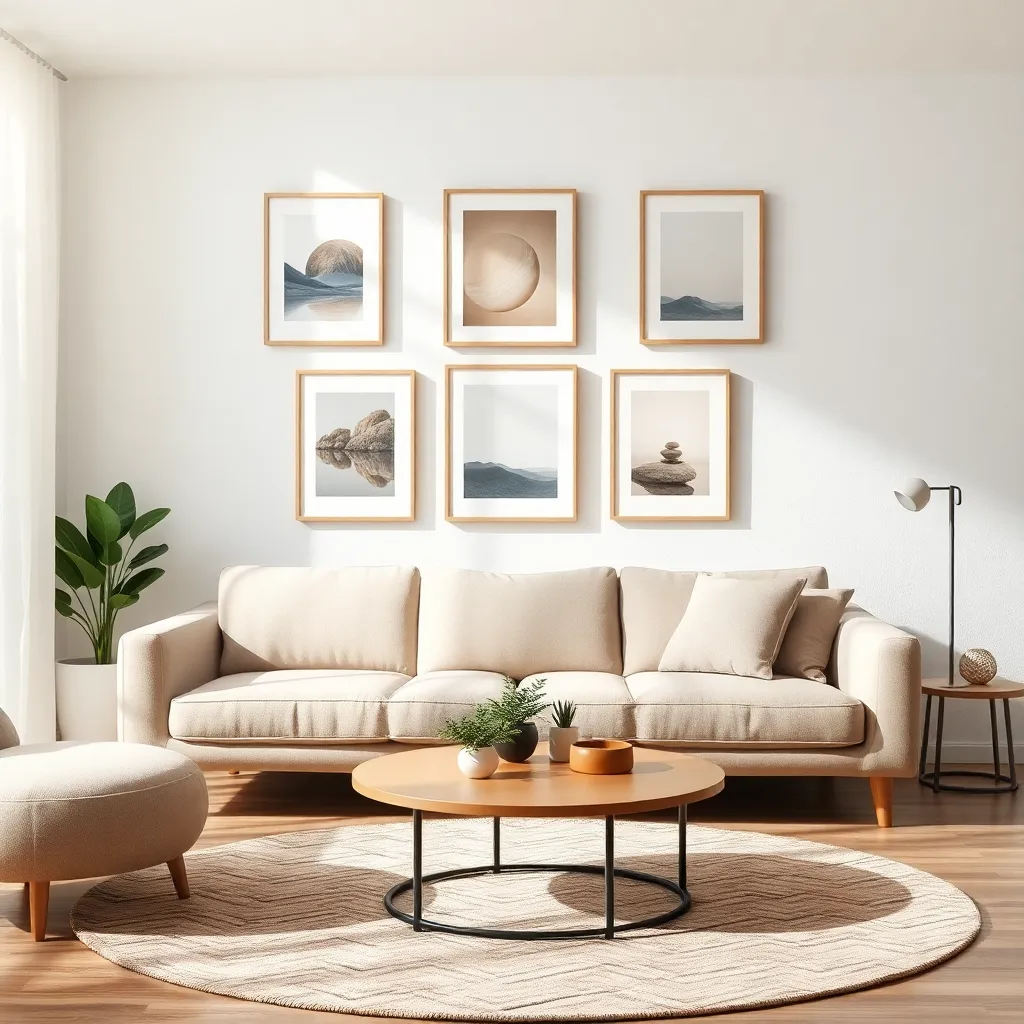
Art has the power to transform a space, making it essential to arrange it with intention. Start by considering the room’s energy flow—artworks should enhance the natural movement within the space.
Next, select pieces that resonate with the room’s purpose and your personal style. For a living room, choose calming and harmonious images; a vibrant abstract might work well in a creative space like a home office.
Placement is as crucial as selection. Hang art at eye level for an inviting and balanced look, using the 57-inch rule where the center of the artwork is 57 inches from the floor, aligning with most gallery standards.
For those with a collection, consider creating a gallery wall. Use a mix of sizes and frame styles for visual interest, ensuring the arrangement follows a cohesive color palette that complements the room’s overall aesthetic.
Select Materials with Intent
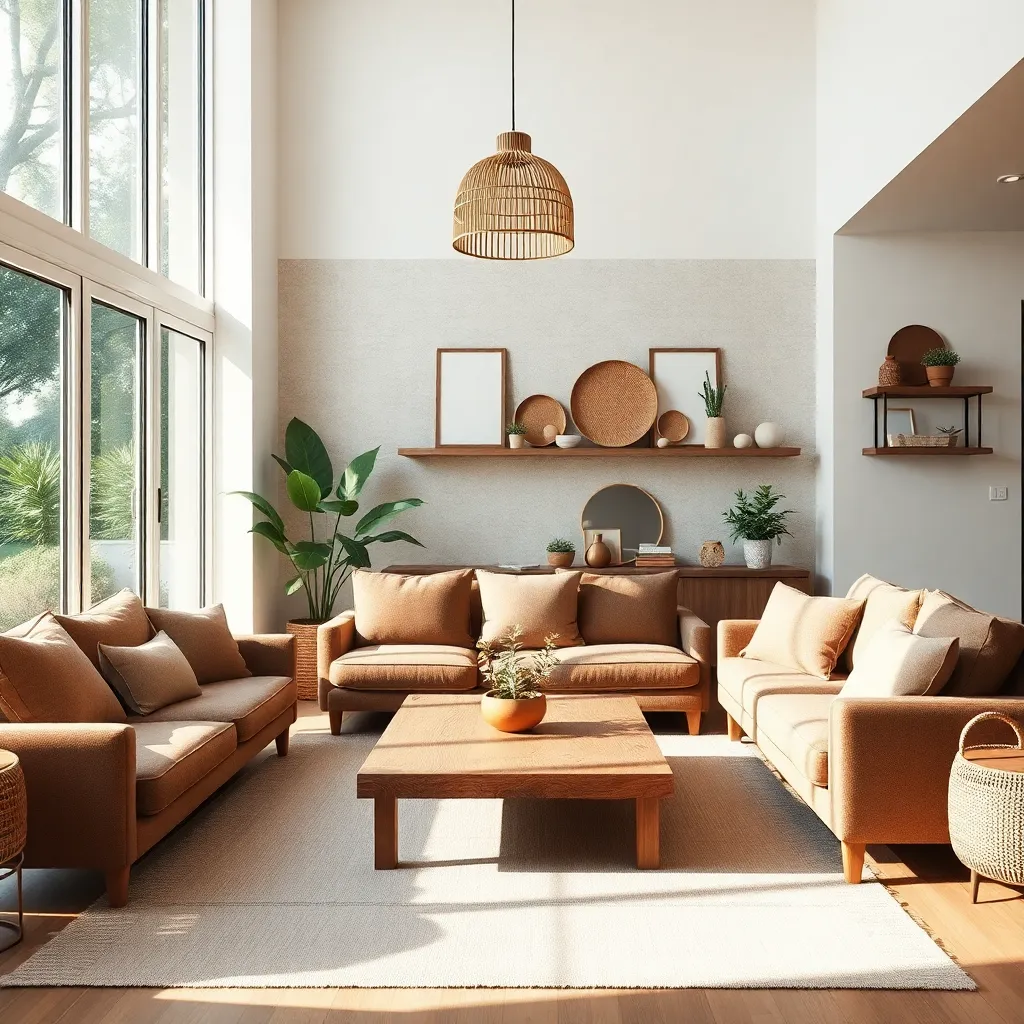
Choosing materials with intent is crucial for creating a balanced and harmonious space in your home. Focus on incorporating natural materials like wood, stone, and cotton to enhance the connection with nature, which is fundamental in Feng Shui.
When selecting furniture, consider the energy flow and how each piece will interact with the room’s layout. Opt for furniture that is both functional and aesthetically pleasing, such as a wooden dining table with smooth edges to promote positive Chi.
Color palettes play a significant role in material selection, as they influence mood and energy. For a calming effect, pair natural woods with earthy tones like soft greens or muted browns, which help to ground and stabilize the space.
Advanced decorators might explore sustainable materials that not only align with Feng Shui principles but also support environmental well-being. Integrate fabrics like organic cotton or bamboo for upholstery and drapery to maintain a serene and eco-friendly atmosphere.
Balance Yin and Yang Elements
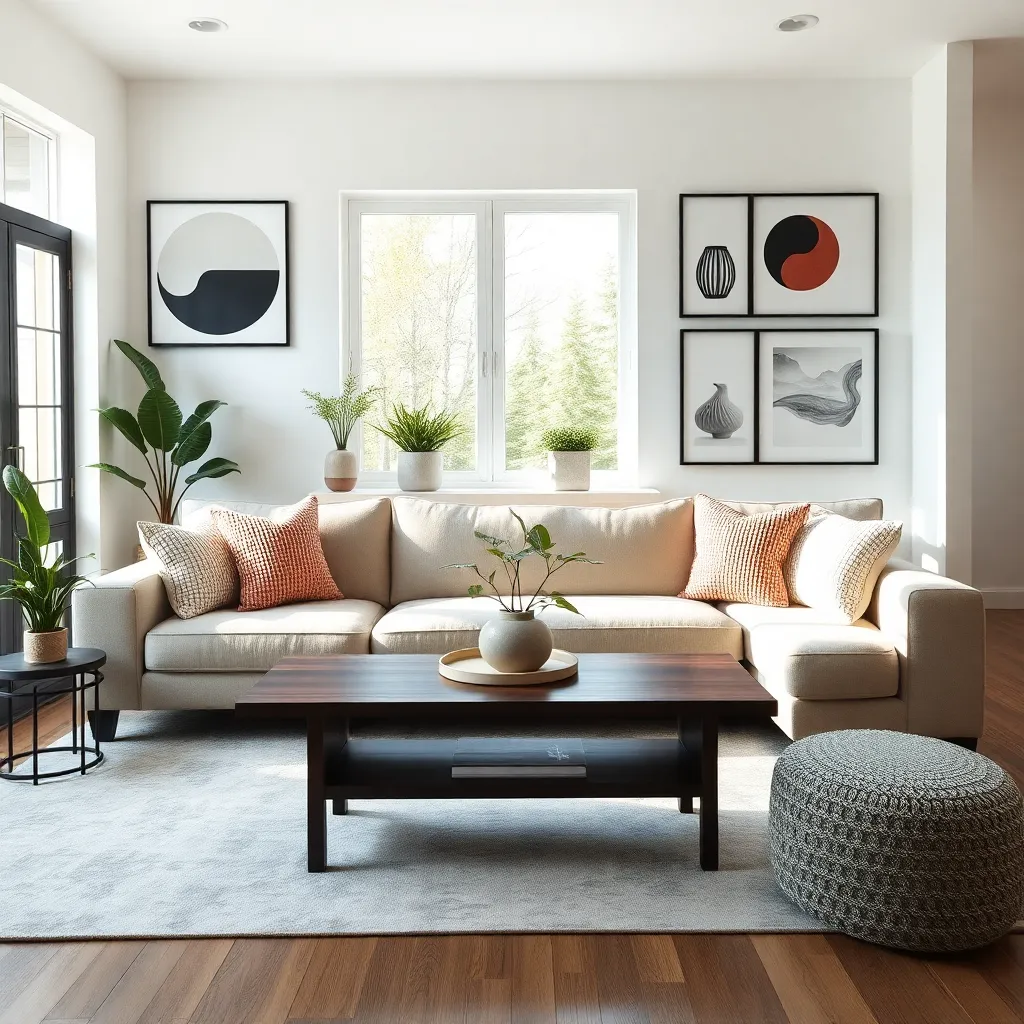
Balancing Yin and Yang elements in your home is essential for creating a harmonious environment. Begin by identifying areas that feel too rigid or too soft, and introduce contrasting elements to create balance. For instance, if a room feels overly bright and active (Yang), consider adding softer, more subdued elements like plush cushions or curtains in muted tones to introduce Yin qualities.
Incorporate furniture that complements both Yin and Yang energies, such as a wooden coffee table with a glass top. The wood introduces a natural, grounding aspect (Yin), while the glass adds a reflective, dynamic quality (Yang). To enhance balance, position the furniture in a way that encourages smooth energy flow through the room, avoiding cluttered spaces or obstructed pathways.
Color choice is another powerful tool for balancing these energies. Use soft blues and greens to bring a soothing Yin feel to a space, while incorporating vibrant reds or oranges for a burst of Yang energy. When selecting wall colors or décor, aim for a balanced mix that reflects both tranquility and vitality, ensuring the room feels neither too passive nor overly stimulating.
For those looking to delve deeper, explore the use of lighting to adjust the Yin and Yang balance. Dimmer switches and adjustable lamps allow for flexibility, enabling you to modify the room’s atmosphere as needed. This adaptability ensures your space remains dynamic and responsive to different needs and moods, maintaining a perfect balance between relaxation and activity.
Clear Pathways for Energy Movement
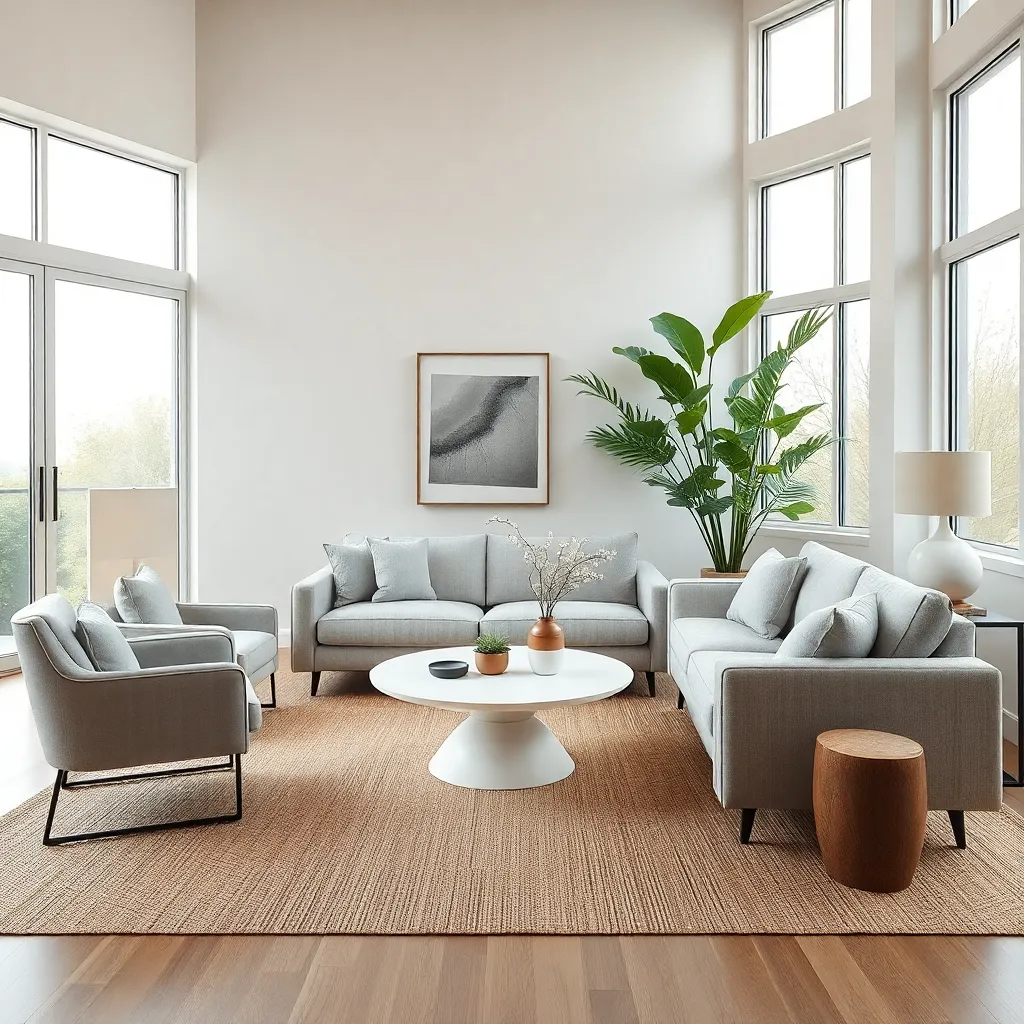
Creating clear pathways in your home is essential for the smooth movement of energy, or chi, which is a central principle in feng shui. To achieve this, begin by ensuring that your furniture is arranged in a way that allows for easy navigation and avoids obstructing any natural walkways.
Consider the placement of large furniture pieces, such as sofas and bookcases, to avoid blocking entrances or windows, which can hinder energy flow. Opt for furniture with rounded edges rather than sharp corners, as this can help soften the energy and promote a more harmonious environment.
Keeping pathways clear also involves minimizing clutter, which can stagnate energy. For a more advanced approach, use mirrors strategically to reflect light and energy through the space, especially in narrow hallways or small rooms where energy might otherwise become trapped.
Color selection plays a crucial role in guiding energy through a space. Use light, airy colors such as soft whites or pastels on walls to create a sense of openness and continuity, enhancing the flow of energy throughout your home.
Utilize Crystals for Energy Boost
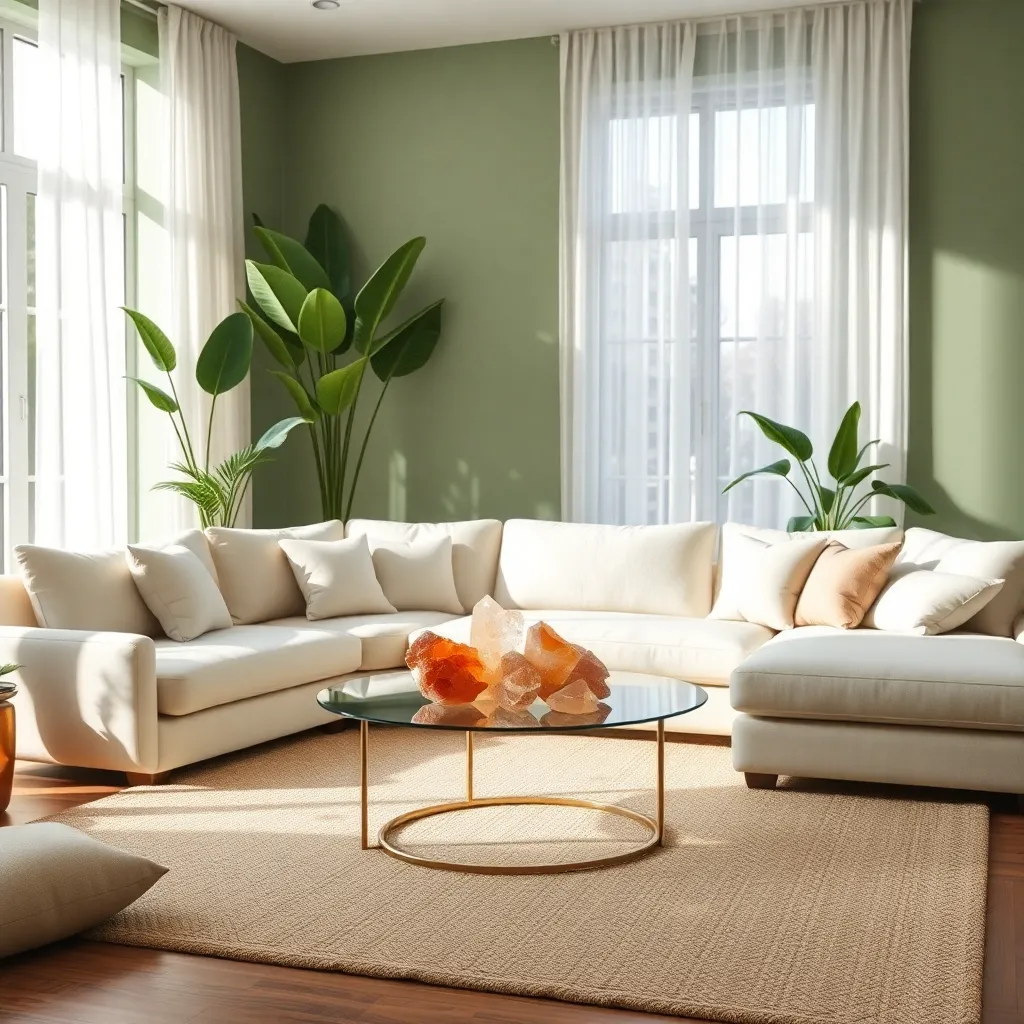
To harness the energy-boosting powers of crystals, start by placing them strategically in your home to influence the flow of chi. Position crystals such as amethyst or rose quartz in areas where you seek clarity or emotional balance, like your living room or bedroom.
For beginners, select larger crystals with smooth surfaces, as they are easier to clean and maintain. Advanced decorators might incorporate clusters or geodes, which can enhance the aesthetics of a room while amplifying energy.
Consider the color of the crystals to complement your existing decor; for instance, pair clear quartz with neutral palettes for a seamless look. If you prefer bold color schemes, opt for crystals like citrine or carnelian to add vibrancy and a sense of vitality.
To maximize their effect, place crystals near windows where natural light can enhance their reflective properties. This not only boosts energy in the room but also creates an attractive visual feature that draws the eye.
Create a Calm Meditation Space
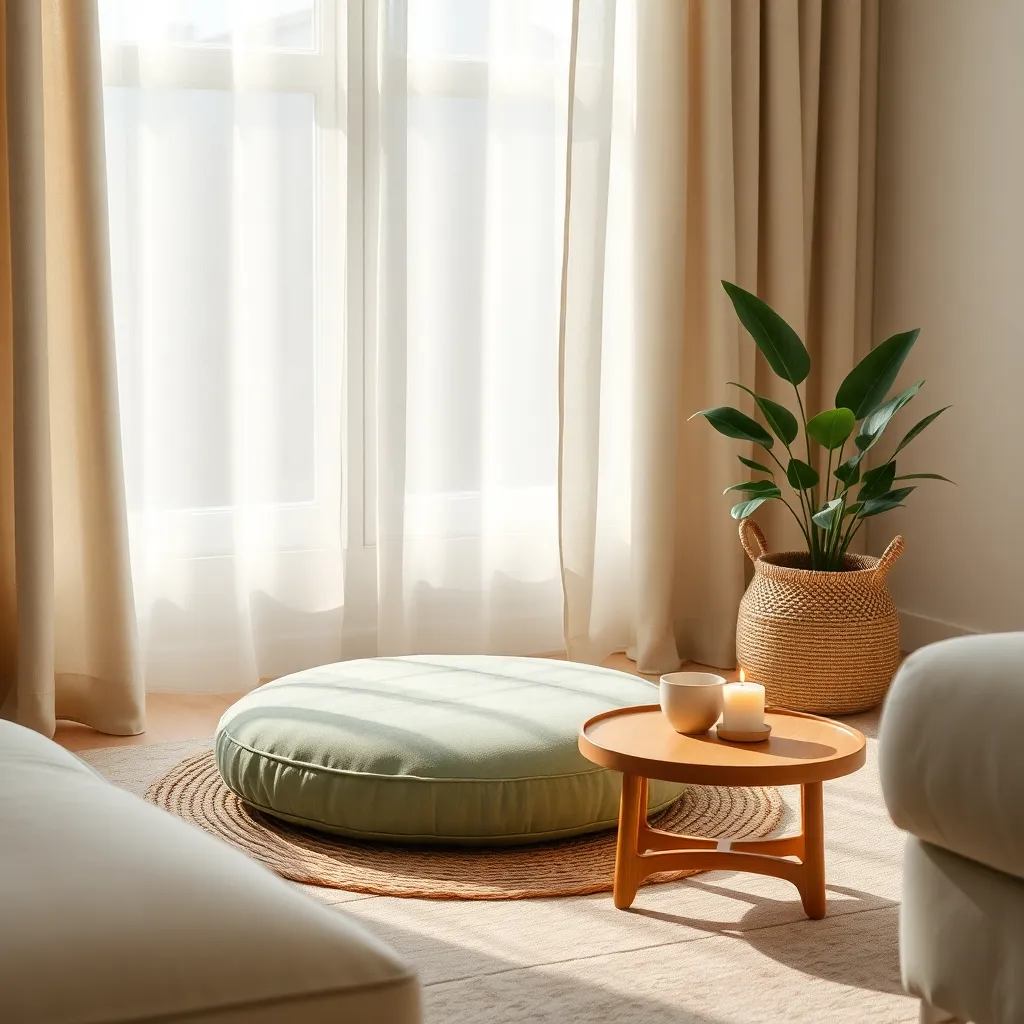
A calm meditation space can be a sanctuary within your home, providing a retreat from the hustle and bustle of daily life. Start by choosing a quiet, secluded area that naturally minimizes noise and distractions, such as a corner in the bedroom or a section of the living room.
Opt for neutral, soothing colors like soft blues, greens, or gentle earth tones to create a serene atmosphere. These colors can be applied to the walls or incorporated through textiles like cushions and throws, which also add comfort and warmth to the space.
Incorporating natural elements is essential to foster tranquility and peace. Consider adding a small indoor plant or a tabletop fountain to introduce a sense of nature and the calming sound of flowing water.
Furniture selection should be minimalist and functional, focusing on comfort. A plush floor cushion or a simple meditation bench can serve as the perfect seating option, allowing you to maintain proper posture during meditation sessions.
To further enhance the space, integrate soft lighting solutions such as lamps with dimmer switches or candles to create a warm, inviting glow. This type of lighting helps to ease the mind and encourage relaxation, setting the perfect mood for meditation.
Conclusion: Growing Success with These Plants
Incorporating Feng Shui into your home can rejuvenate your relationships by enhancing energy flow and harmony. We’ve explored 13 transformative concepts: decluttering spaces to welcome fresh beginnings, optimizing the bedroom layout to foster intimacy, and using colors and lighting to evoke warmth and connection. We’ve also touched on the importance of natural elements like plants and water features for nurturing growth, strategic mirror placements for balance, and creating inviting entryways to attract positive energy. In addition, arranging furniture for open communication, incorporating meaningful decor, and ensuring a clutter-free kitchen can enrich your home’s vibrancy and your bond with loved ones.
As your next step, choose one room to transform using these principles and observe the shifts in energy and connection. For ongoing inspiration and guidance, be sure to bookmark this article and revisit it as you continue to cultivate a serene and loving environment.
Embrace these simple yet powerful changes and watch as your relationships bloom with renewed vitality. Your journey toward a harmonious home and thriving relationships begins now, and with these tips at your fingertips, you’re well-equipped for continued success.
